SUMMARY
This is AI generated summarization, which may have errors. For context, always refer to the full article.

MANILA, Philippines – A few weeks before the controversial deadline for jeepneys to consolidate, President Ferdinand Marcos Jr. promised that this time, there would be no more extension.
“Asahan ninyo, wala na pong extension ‘yung modernization. Kailangan na kailangan na natin ‘yan (Believe me, there will be no more extension for modernization. We really need it),” he told a cheering crowd of transport leaders.
In his second year in office, this was perhaps Marcos’ most important declaration regarding the transport sector. Until that point, some jeepney operators, manufacturers, and financiers were still second-guessing the government’s commitment to the transport modernization program. After all, the first step of the entire modernization program – industry consolidation – had already been extended at least six times.
But the April 30 deadline went and came, and the government stood firm. Now, over a month later, questions remain: has consolidation truly been effective, and where does the modernization program go from here?
What’s the current status?
The Department of Transportation (DOTr) considers industry consolidation a success. Latest figures provided by the DOTr show that 159,914 out of 191,730 (83.41%) public utility vehicles (PUVs) consolidated before the deadline.
Consolidation involves operators of individual jeepneys forming either transport cooperatives or corporations. So far, 1,749 transport cooperatives with around 262,870 members, and 1,088 corporations have been formed.
"Consolidation should have ended 2020 pa siguro (perhaps). But [with] seven or eight extensions, it reached after April 30. Finally, it's done," DOTr Undersecretary of Road Transport and Infrastructure Jesus Ferdinand Ortega said on June 17.
Studies of the Land Transportation Franchising and Regulatory Board (LTFRB) show that a consolidation rate of 65% is already sufficient since there is an “oversupply of public utility jeeps.” The modern jeepneys that will eventually replace traditional ones will also be able to seat up to 30% more passengers, according to Ortega.
Since talks about consolidation began heating up again in early 2023, protesting transport groups have held multiple strikes, often led by PISTON and Manibela. Their concerns mainly revolved around the costs of forming a consolidated entity and purchasing modern jeepneys. Other jeepney drivers also told Rappler that they disliked being "forced" into cooperatives and losing direct ownership of their franchise and vehicle. (READ: Anti-poor? How gov’t defends PUV modernization, why jeepney stakeholders oppose it)
That has prompted the government to go back on its word and extend the deadline multiple times after what was supposed to be the "final" extension. But the government finally stuck to its April 30 deadline because in their eyes, jeepney operators had been given long enough time to comply.
“Based on the extension from December to April 30 which the president extended, I would say, lahat ng totoong interesado, lahat ng gustong sumama, nasa loob na po. I need to say it kasi nasa back of our mind, kawawa naman yung mga iba hindi nakasama. Hindi po. Lahat ng gusto nakasama na po,” Ortega told reporters during the Monday Circle Financial Forum, a forum for remarket research analysts, private sector heads, government executives, and reporters.
(Everyone who is truly interested, who wanted to join, are now part of the consolidation. I need to say it because at the back of our mind, we feel bad for those that were not able to join. No. Everyone who wanted to join is in.)
Ortega has dealt with the problems surrounding consolidation firsthand. Before recently taking his position as undersecretary, he sat as chairman of the Office of Transport Cooperatives, the lead government agency tasked with consolidating jeepney operators into cooperatives.
During that time, Ortega attempted multiple times to negotiate with the two groups most vocally opposed to consolidation, Manibela and PISTON. Certain members of the group remain unconsolidated until now.
“If we see certain groups or personalities na nasa labas, kahit anong extension, they will never join. Tapos na po yung consolidation (that remain outside, whatever extension we give, they will never join. Consolidation is done),” he said.
What do jeepney operators think?
According to Ortega, whether an operator opts to consolidate or not is a “business decision.”
“My mindset when this consolidation was happening, it is a business decision by the operator. And we should respect their decisions,” he said. “‘Ay, matanda na ako, retired na ako.’ That's fine. ‘Ay, I'll change business from operator. I'll just do business sa palengke or sari-sari store.’ Pwede.”
('Oh, I'm getting old, I'll retire.' That's fine. 'Oh, I'll change my business as an operator. I'll just do business as a wet market vendor or a sari-sari store owner.' Sure.)
There were also other operators who described the idea of cooperatives and corporations as too “complicated” for them.
“For them, parang komplikado ang tingin nila sa kooperatiba o korporasyon. Ayaw po nila maging sa ilalim ng isang organisasyon. Ang jeepney driver-operator ang kanilang mas gustong sistema, which is one-on-one, so ayaw nila sumama sa isang bagay na parang komplikado,” Ortega explained in a Senate hearing on the PUV modernization program last June 21.
(For them, they view cooperatives and corporations as complicated. They don’t want to be under an organization. They prefer the jeepney driver-operator system, which is one-on-one, so they don’t want to join something like this which seems complicated.)
But for some operators, the issue of consolidation highlights an ideological divide about how a public service like transportation should be managed. PISTON, which brands itself as a “progressive and anti-imperialist federation” has long opposed franchise consolidation, fearing that it would lead to the “corporate capture of mass transportation.”
“The government’s insistence on consolidation is unjustified. They are just rushing to benefit their accomplice businessmen and corporations in public transport,” Mody Floranda, PISTON national president, said in a statement weeks after the supposed December 31 deadline passed.
In Bacolod, opposition to consolidation is especially strong. Kabacod Negros Transport Coalition president Lilian Sembrano claimed that more than 50% of jeepney operators remain unconsolidated in the city. Sembrano also alleged during the Senate hearing that officials from the local government unit (LGU) and the LTFRB connived to grant routes to those close to them. (READ: Bacolod legislators make last-ditch effort to avert jeepney crisis, unrest)
“‘Yung 81%, kahit ipatawag natin dito sa Kongreso ‘yung mga operator, magsasabi ‘yan na ‘napilitan lang kami mag-consolidate kasi mawawalan na kami ng kabuhayan after April 30,’” the local transport leader said.
(The 81%, even if we call the operators to Congress, they will say, 'We were forced to consolidate because we would lose our livelihood after April 30.')
Whether jeepney operators were threatened by the state into consolidation or not is a question that the Senate hearing is likely to pursue. Still, figures show that the majority of jeepneys in the country have consolidated. And for those that have done so, they continue to cling on to the President’s word.
“Si Presidente na po ang nagsabi na wala nang extension. Ang tanong ko lang po, papaano naman po kaming sumunod?” ALTODAP president Boy Vargas said during the Senate hearing.
(The President has already said there will be no more extensions. My only question is, what about those of us who complied?)
“Madidismaya naman po kami o madidisorganize kung sakaling i-extension pa po ito (We will be diswayed and disorganized if this gets extended again),” he said. “Dito po sa consolidation, ‘yun po ‘yung gusto ng gobyerno natin (Consolidation is what our government wants).”
Why does Marcos support the program?
For Marcos, making this jeepney modernization program successful is more than just about continuing an old government policy, which has its roots in former president Rodrigo Duterte’s administration. (READ: Duterte to jeepney drivers, operators: Modernize by year-end or get out)
In many ways, the PUV modernization program can be viewed as a continuation of what prominent transport groups believe is former president Ferdinand Marcos Sr.’s “legacy” in the transportation sector. It was Marcos Jr.’s dictator father who established the Office of the Transport Cooperative in the 1970s and 1980s. Marcos Jr. appealed to this memory during his 2022 presidential campaign, capturing the support of many of the major transport groups in the country.
“Talagang binigyan ng pansin ni Pangulong Marcos ang transportasyon, kami sa Pasang Masda ang kauna-unahang nagkaroon ng jeepney for the drivers, sa tulong ‘yan ni Pangulong Marcos,” Pasang Masda national president Obet Martin, a long-time Marcos loyalist, said in 2022 about Marcos Sr.
(President Marcos gave attention to transportation. Pasang Masda was the first to have a jeepney for drivers program with the help of President Marcos.)
Getting past the consolidation phase is a delicate balance of allowing just enough extensions while also exerting the political will necessary to enforce the deadline. Marcos, however, seems to have weathered the political backlash that might arise from the transport sector. When the President announced that the government would stick to its April 30 deadline, he was greeted with cheers from transport leaders in attendance, many of whom had pledged to support him during the 2022 elections.

PISTON, however, remains strongly opposed to the Marcos administration's decision to stick with the current modernization program.
“The Marcos government has yet to lay out concrete plans for supporting and sustaining the livelihoods of PUV drivers and operators who fail and refuse to consolidate their franchises. This underscores the failure of the corporate-driven and foreign-oriented public transport modernization program – a program that has left many transport workers and commuters in dire straits,” PISTON said in a statement two weeks after the April 30 deadline.
What’s next?
Now that the consolidation deadline is over, the DOTr is shifting its focus to route rationalization. Undersecretary Ortega said that LGUs in the Philippines are still finalizing their local public transport route plans (LPTRP), which outline the number of PUV units assigned per route. Under the modernization program, jeepneys are supposed to follow these new routes.
So far, only around 24% of LPTRPs in all LGUs have been approved. Ortega said that the government is giving itself until 2026 to finish all LPTRPs since many local governments still need to be capacitated on how to come up with a rationalized route plan.
So, when will operators be required to buy expensive modern jeepneys? According to Ortega, cooperatives and corporations are only required to modernize their fleets after they obtain their LPTRP. From that point on, they will have 27 months to get modern jeepneys.
“Just to be clear, wala pa pong bilihan ngayon ng sasakyan (there's no requirement to buy vehicles right now),” Ortega told reporters on June 17.
The DOTr estimates it may take until 2030 before the majority of jeepney fleets are modernized.
“We expect it to happen 2030. And we're talking about upgrading almost or more than 150,000 vehicles. That’s how many they are. That's why it's not something that could be done in a few years,” Ortega said in a mix of English and Filipino.
Within that timeframe, manufacturers are expected to be able to scale up and meet demand, lowering the price of jeepneys. Time will tell whether famed local manufacturers, like Francisco Motors and Sarao Motors, can bring a modern look to the aging King of the Road. – Rappler.com
This article is part of “Marcos Year 2: External Threats, Internal Risks,” a series of analyses and in-depth stories assessing the second full year of the Marcos administration (July 1, 2023, to June 30, 2024).
Add a comment
How does this make you feel?
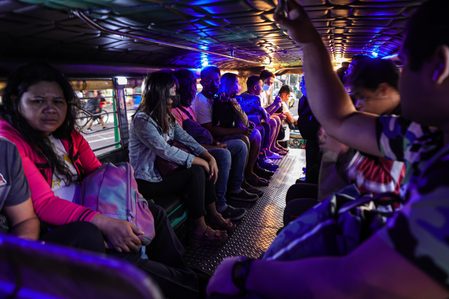
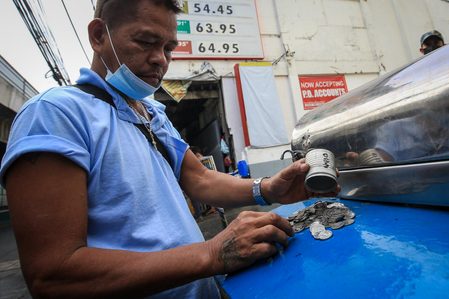
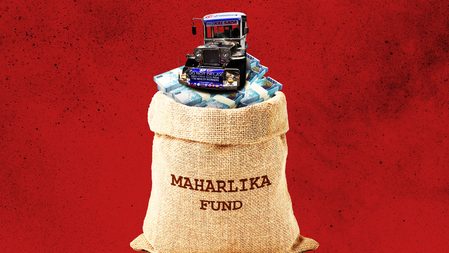

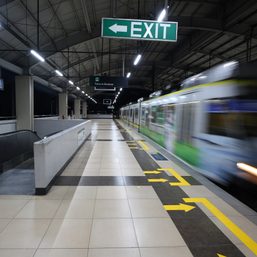


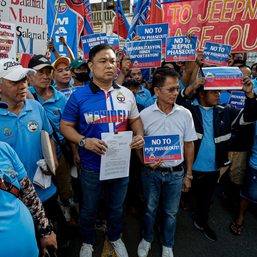



![[OPINION] Gov’t, jeepneys, and blindly following the logic of modernity](https://www.rappler.com/tachyon/2024/05/tl-jeepneys-logic-of-modernity.jpg?resize=257%2C257&crop_strategy=attention)
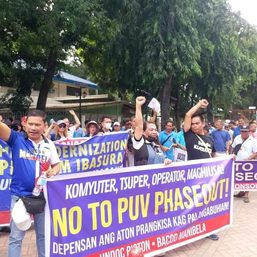
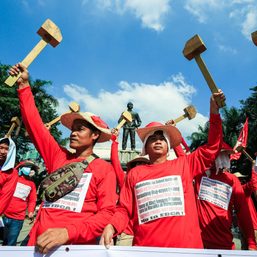
There are no comments yet. Add your comment to start the conversation.